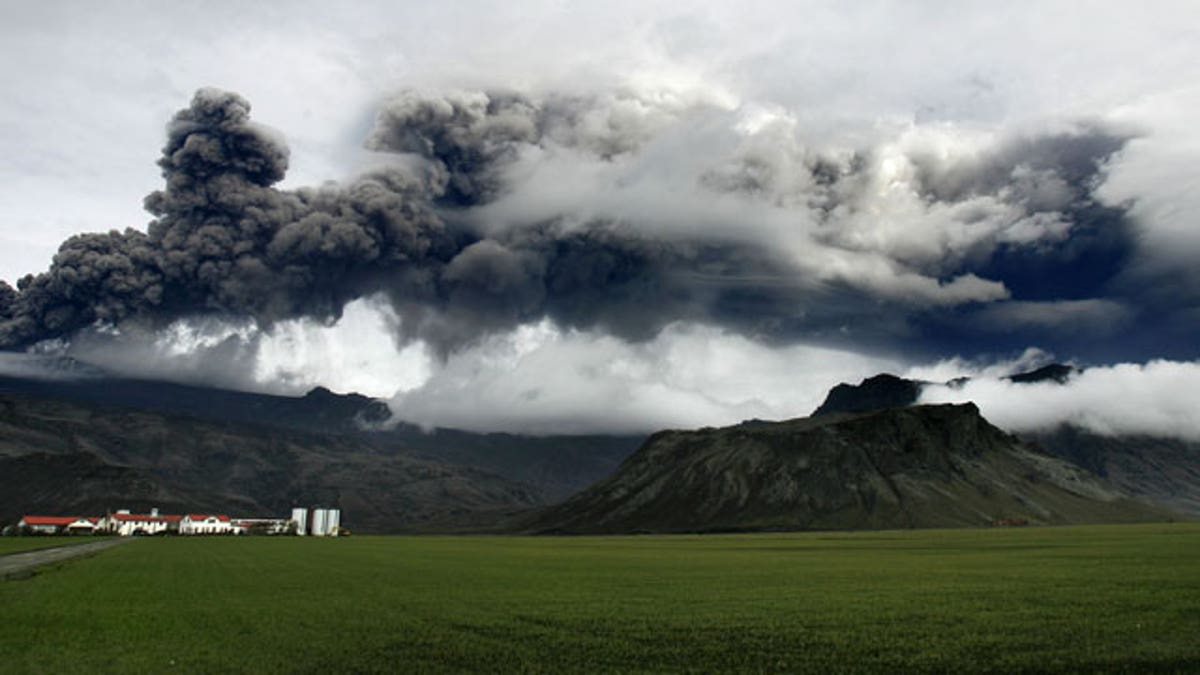
May 5: A plume of ash rises from a volcano erupting under the Eyjafjallajokull glacier, near Hvolsvollur, Iceland. (AP)
BRUSSELS -- Most flights between Europe and North America will be delayed on Saturday due to the spreading cloud of volcanic ash stretching across much of the northern Atlantic, the European flight control agency said.
Flights will have to be rerouted north over Greenland or south over Spain to avoid the 1,200-miles-long cloud stretching from Iceland to northern Spain, Eurocontrol said. This will increase flying times by about an hour in either direction.
"We assume that basically most of the trans-Atlantic flights will have to be rerouted on Saturday," Eurocontrol spokeswoman Kyla Evans said. "We expect substantial delays because of that."
Approximately 600 airliners make the oceanic crossing every day. Around 40 percent will be rerouted southward and the rest will skirt Iceland from the north.
The plume of ash, which also forced the closure of half-a-dozen regional airports in northern Spain on Saturday, is expected to expand into southern France during the day, carried along by Atlantic winds. Spain's main international airports of Madrid and Barcelona were expected to remain open.
"During the day, the area affected by volcanic ash is expected to extend from Iceland, south to Portugal and possibly as far east as Barcelona and Marseille," a Eurocontrol advisory said.
Until Eyjafjallajokul, the volcano in southern Iceland, stops its emissions, the key to the future course of Europe's ash crisis will be the prevailing winds. The eruption of the glacier-capped volcano has shown no signs of stopping since it began belching ash April 13. It last erupted from 1821 to 1823.
Since the ash is reaching altitudes of up to 35,000 feet, right in the path of most trans-Atlantic flights, it will effectively block the usual routes. Eurocontrol said this would cause significant congestion, particularly in the airspace over Spain and Portugal where many of the diverted flights are heading.
A trans-Atlantic flight from New York to Paris, which is normally about 3,600 miles long, could add on another 600 miles -- and an hour of flying time -- by being diverted over the Iberian Peninsula.
Tracks across the Atlantic normally follow "great circles" -- the shortest path between two points on the globe. They are determined each day by air traffic control centers on both sides of the Atlantic, generally depending on the jet stream from North America to Europe.
Planes flying the track system typically follow each other in 10-minute intervals and at altitude levels 1,000 feet apart, in order to maintain safety in airspace which is beyond the range of radar control.




















